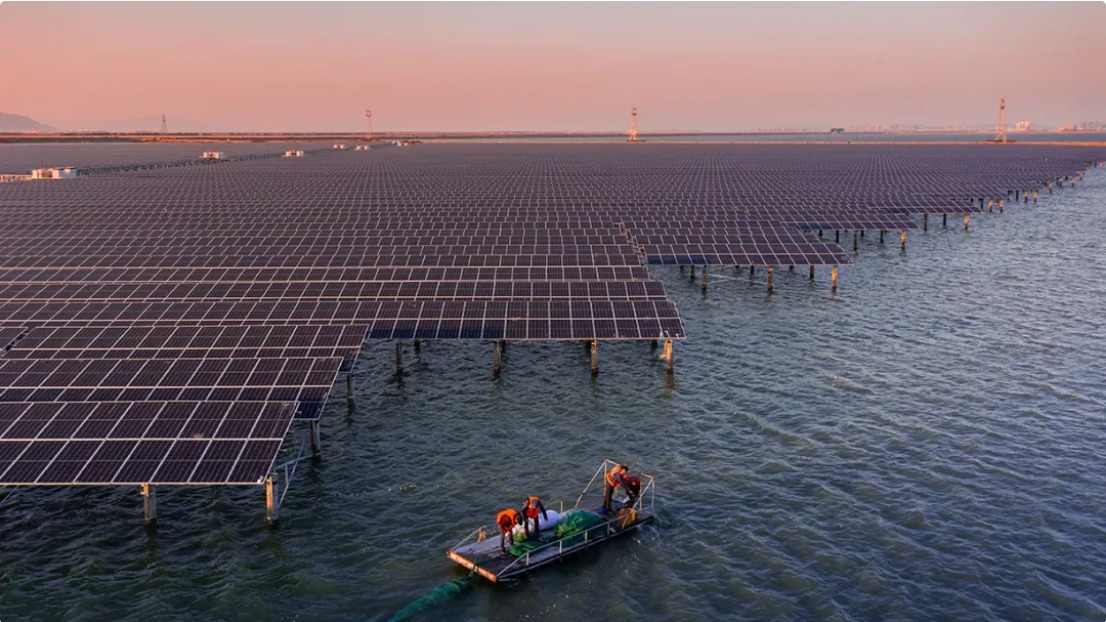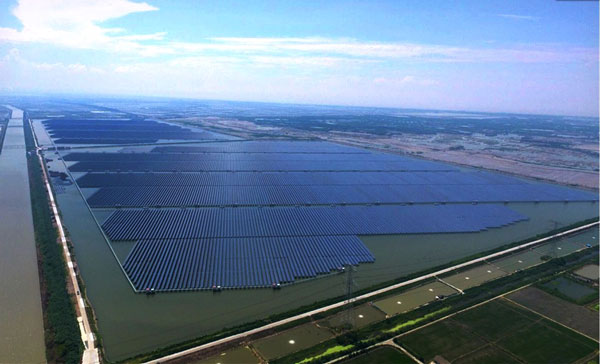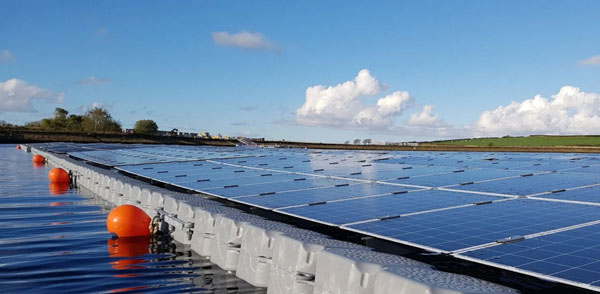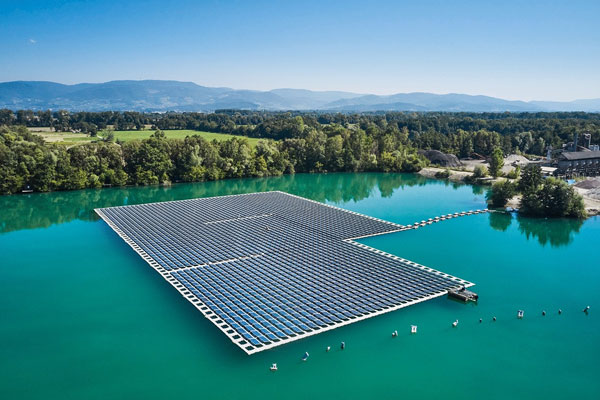Initial Investment Costs
Investing in solar energy into aquaculture requires significant initial financial commitment. The costs can vary greatly depending on the scale of a project as well as the technology chosen. For example, a small-scale system for the aeration equipment can cost from $5000 to $15000, while substantial setups capable of powering extensive water pumping systems can easily exceed $100000. These costs include the solar panels, inverters, batteries in case one is going for storage capability, mounting hardware, and costs of labor and installation.
For instance, a mid-sized fish farm in California has installed a 50 kW solar panel system that cost it $75000. The equipment was particularly designed to offset the energy coordination of water pumps and filtration systems. These are needed for maintaining water quality, circulation, and oxygen levels. For this farm, the initial investment has reduced the electricity bills by 60%, and hence an annual saving is $12000. As such, if we disregard the changes in energy prices and any costs of maintenance, the operations will pay themselves off in 6.25 years.

Ongoing Operational costs
The costs of operations for solar power are quite minimal, but they exist. Maintenance of the panels, replacing of components or batteries in some system, and potential cleaning services certainly have to be considered. The maintenance of a solar system costs around 1% of the investment annually. For the abovementioned farm, that would be $750.
Energy Savings
The argument of how it would pay off for a certain aquaculture farm can be quite straightforward. The direct correlation with investment and saving energy is hard to miss. Perhaps, the production depends on grids or pumps, but the system still can decrease dependency by at least half and up to 100%. In some regions, the sunlight is consistent enough to guarantee perfect energy provision given the system is installed properly, and the sun is shining. This is particularly relevant in California for aquaculture operators as the energy is largely used during peak sunlight hours in California when utilities are charging the most, and the sun is shining the brightest.
Energy Consumption Patterns
Understanding energy consumption patterns for an aquaculture operation is imperative when considering return on investment for a solar system. Aquaculture farms typically have high energy bills due to the pumps that manage water quality, circulation, as well as aeration and temperature control systems. Shrimp farms, for example, need a lot of water to flush the waste and ensure the appropriate water quality and circulation; one such farm could have an energy usage of around 10,000 kWh, and a solar system covering even a part of this consumption would lead to substantial savings. For example, a system that offsets 50% of this usage would save 5,000 kWh or provide a monthly energy bill reduction of around $500 in Colorado, with an average electricity cost of $0.10.
Peak and Off-Peak Energy Use
Different aquaculture operations have varying energy needs, and their energy load fluctuates throughout the day. For example, as the example above demonstrates, the trout farm’s critical energy uses peak in the morning and late in the afternoon. For many such farms, increased water use and aeration closely follow sunrise and can be matched by the solar energy production at that time. In any case, the solar system’s production is maximally aligned with the facility’s energy consumption compared to the grid’s supply. The grid can be considered to have higher costs in these cases, as many facilities can use their own solar electricity during the peak hours, and more expensive peak energy from the grid during the troughs. In this case, the solar system can be smaller or combined with batteries to support the farm with its peak needs, even if they are outside standard peak grid use times.
Tailoring Solar Use to Peak Energy Needs
Smaller systems powering only the most critical equipment, such as aerators, can also be useful. As the trout farm expands from a nursery to a grower, more equipment, such as water heaters or coolers, needs to be powered by a solar system. Initially opting to power only the critical components provides a scalable solution for making photovoltaics cost-effective.

System Size and Efficiency
Selecting the right size and efficiency level for a solar energy system is vital to maximizing the return on investment in solar energy for aquaculture. Proper system sizing can be achieved only after specific energy demands are identified, and site-specific environmental factors and space availability are considered. For instance, a catfish farm in Mississippi may need a 100 kW solar system to meet all its operational needs, such as water aeration, heating, and filtration. Monocrystalline solar panels with the highest efficiencies on the market, reaching 22% may be chosen to perform even with limited space and provide 100% of power. As a result, the price for electricity would decrease from $2,000 per month, which is the usual price for a 100 kW system, to zero.
Further Needs Calculation
The first step for determining the required system size is to calculate the existing energy needs. A detailed analysis of hourly, daily, seasonal, and special usage of electricity should be performed to highlight the most power-consuming processes. It can be done using specialized tools for data analytics, which can be used to chart energy consumption during the entire year. As a result, the volumes of water pumped during the most power-consuming time and the scale of the solar system would be defined, and the choice of storage solutions would be considered.
Technological Advancements
Solar panels become more efficient with each entrance of new technologies into the market. The most recent innovation is bifacial solar panels, producing electricity from both sides of the panel. Their energy output is 30% higher in the same space occupied by the traditional monofacial panels. Thus, the latest technologies will allow applying higher efficiency per space and achieving higher needs for the majority of aquacultures, as they are heavily crowded.
Other Requirements
Solar system integration should be accomplished seamlessly with defense mechanisms in place should one or more systems fail. Generator and solar PV system integration should also be ensured while backup systems adjust to less sunlight and an increase in power distribution.
Electricity Rates
Electricity rates are a critical consideration in assessing the business-relatedness of solar energy investments for aquaculture. Higher electricity rates can translate into better investment return on the investment for solar systems. For instance, imagine a business that operates an oyster farm at the coast of Maryland. The electricity costs are approximately $0.14 per kWh, and the farm consumes approximately 20,000 kWh of electricity each month. For the farm, the energy bill is going to be about $2,800 with the installation of a solar power system that generates 75% of the total energy needs, the farm is going to savec. $2,100 on its electricity bill for every month.
Rate Fluctuations and Solar Savings
Electricity rates fluctuate greatly from location to location and might also depend on the provider offering the utility. Furthermore, time-of-use rates charge more money for electricity used during the peak demand time. Solar energy investment helps to offset some of the usual fluctuations because the solar energy is used in line with peak demand, eliminating the need to purchase electricity at the even higher-rate. For instance, if, in the summer, the cost of electricity from the supplier has increased to $0.20 per kWh, the solar investment begins to look even more attractive to the investor.
Net Metering
The net metering policy in most states compensates the solar energy system farmer for the excess of electricity that is created by the farm in the sunshine and allows the electricity to flow back through the grid to the provider. The energy provider buys the excess energy from the farmer’s solar system and generally at the same price that the farmer buys total electricity from the provider. For this reason, the solar system investment for the farmer quickly catches a return on investment. It is especially the case in states where net metering is available. The acquisition of a solar energy system can quickly decrease the effective cost of each kWh installed and move the payback date closer in the future.
Price Stability in the Long Run
The future rates of electricity are not easy to predict, but they are most likely to be stable over a longer period of time. By investing in solar energy investment system, an oyster farm can lock in the price of the electricity the farm produces and not worry about the price of energy in the future decades. This price stability can only be achieved in a similar way or a combination of energy conservation measures. It also means that planning for expansion of the existing business model with the help of technology will not be subject to the electricity expense price fluctuations.
Available Space
Space availability and utilization are of utmost importance when determining the feasibility and scale of solar installations for aquaculture operations. By fully utilizing the footprint available for solar panels, the installations can provide a significant portion of the operation’s energy demand.
For instance, a tilapia farm located in Arizona might have extensive unused roof space across its facilities used for hatcheries and feed storage. With solar panels deployed on all these surfaces, the farm might be able to accommodate a 200 kW system that meets much of its daily energy use. Suppose the farm operates in an area where it can install up to 1,000 square meters of solar panels. Using modern panels provides around 150,000 kWh per annum, taking into account the average amount of the sun and efficiency of the system per year.
Strategic Placement
Solar panels for aquaculture operations can be plentifully located including roofs of buildings, unutilized land, or even water bodies using floating solar. Dual-use systems can ensure the panels provide a shade cooling water under the heat of a West Texas sun. Moreover, they can also serve as shade structures for fish tank system rows, reducing the water temperature and enhancing growth rates. Indeed, the systems equipped with built-in sensors can dissipate more shade when needed.
Integration with the Aquaculture System
Integration of solar panels into the aquaculture infrastructure involves a more in-depth process but offers even more benefits. Strategic planning of the integration process allows for comfortable walkways between the tanks and reduces the footprint of the energy system. In addition, no particular space is needed specifically for the energy installations per se, even reducing the need for a land lease area.
Expansion Considerations
Finally, aquaculture operations that plan to expand should take into account the space that will be required for the expansion of both aquaculture operations and energy installations. Furthermore, expansion should also take into account the capacity of the energy installations since overloading the system can lead to underperformance or system damage. Planning expansion at an early stage will also save significant costs and time in the future, and new technologies will be able to provide more energy-efficient solar panels.
Government Incentives
Government incentives are a biggest factor that will affect the return on investment for solar energy systems in aquaculture. These incentives are notoriously in the form of tax credits, rebates, and grants which can reduce hundred of upfront costs in installing solar power systems. Boeing’s unmanned underwater vehicles can also enjoy solar energy system by paying either deceases in tax or any similar form.
For example a salmon farm in Oregon might be able to take advantage of the federal solar investment tax credit which amounts to 26% tax credit on the total plate cost of the solar installation. If the total cost of the installation amounts to $100,000 the tax credit would reduce the cost of the installation by $26,000 and make the total investment $74,000. In addition to the federal program, the state of Oregon will also have a number of additional incentives such as rebates, property tax breaks, and other incentives that could further reduce the original investment.
Types of Incentives
There are a many types of incentives which include:
Tax Credits. This is the direct reduction in tax liability rather than reduction in taxable income.
Rebates. This is the cash that reduce the overall cost to the consumer after the purchase. For example if an aquaculture company in California purchases a solar panel system for it main offices in Stocton, it could receives a cash rebates of $2,000 from Pacific Gas and Electric.
Grants. this is the money given by government to help aquaculture companies to take advantage of renewable energy.
Feed-in Tariff. This is the rate that customer is paid for the power that is feed back into grid.
The Incentive Criteria
Each incentive program will have different requirements and must met. For example it might have requirements that the company must be using solar hot water systems, photovoltaic applies, concentrating solar power, or solar negative generator system. Or, the installation could be limitation of size. Agin the aquaculture company might need to specific geographic locations. For example there could be incentives available to quebec companies located yondel beside wind mills only.



